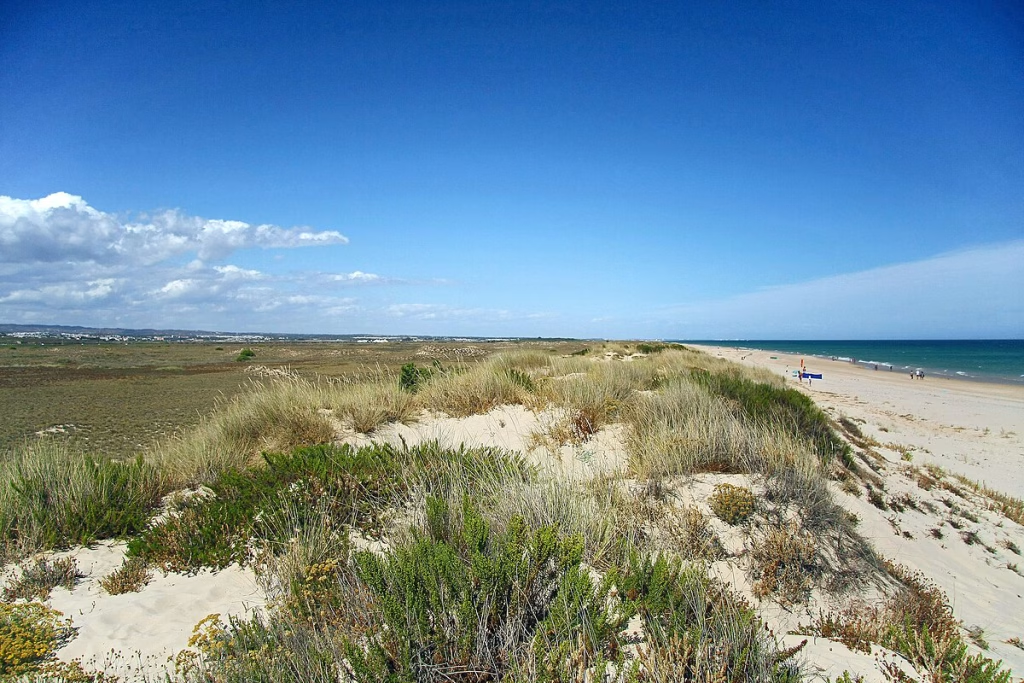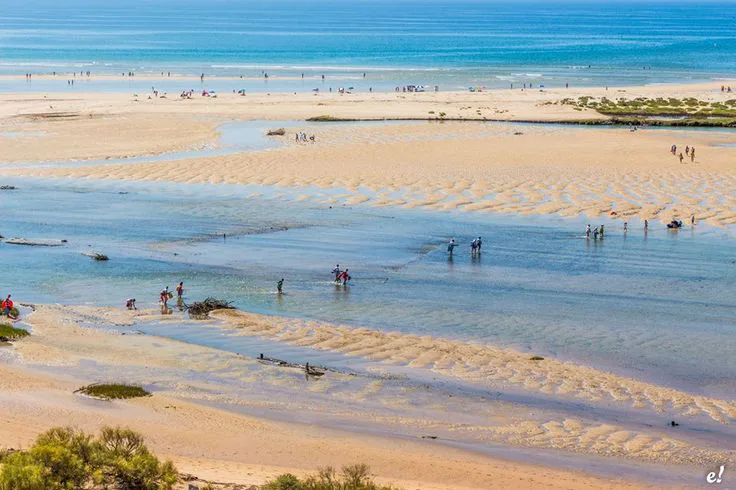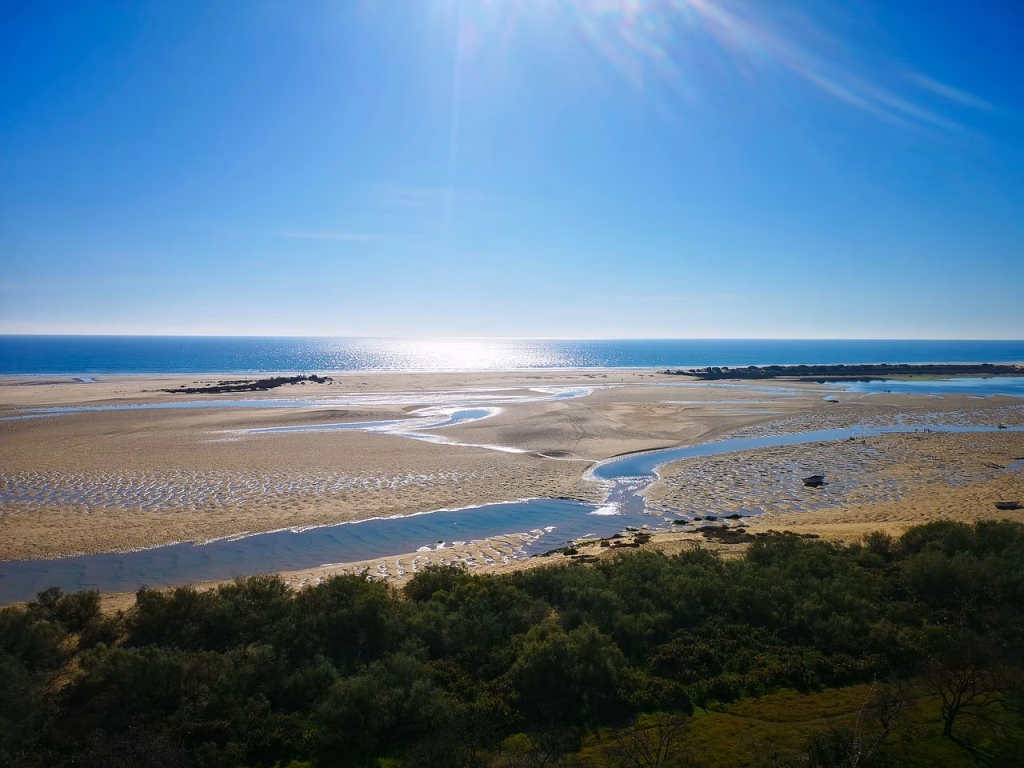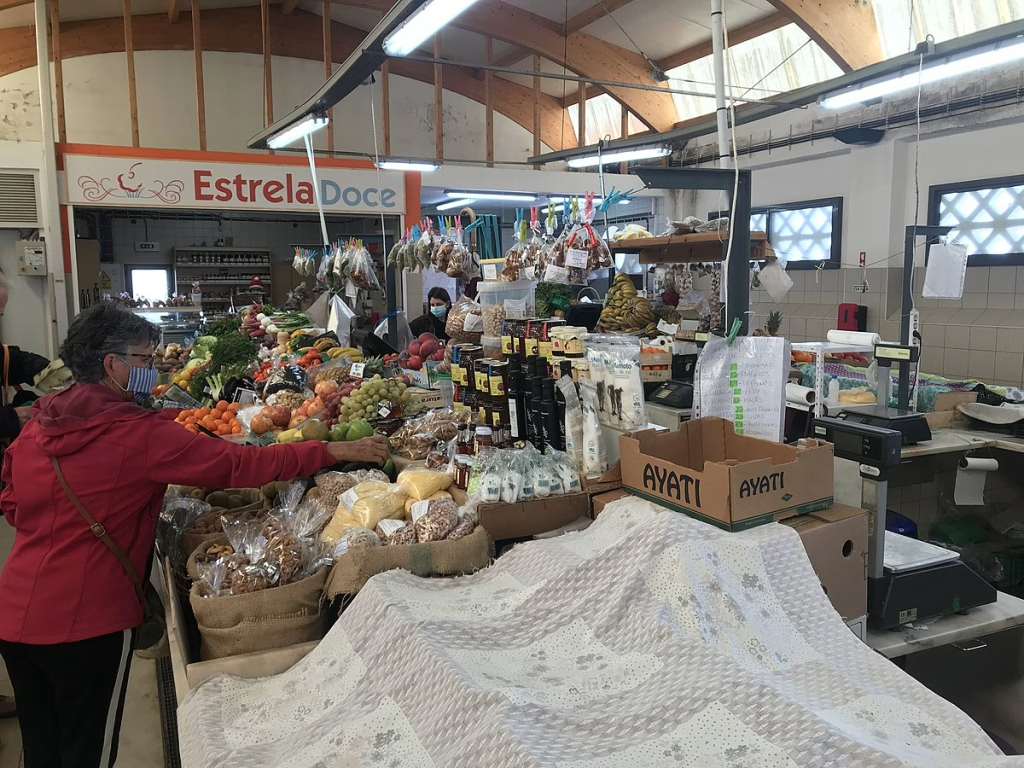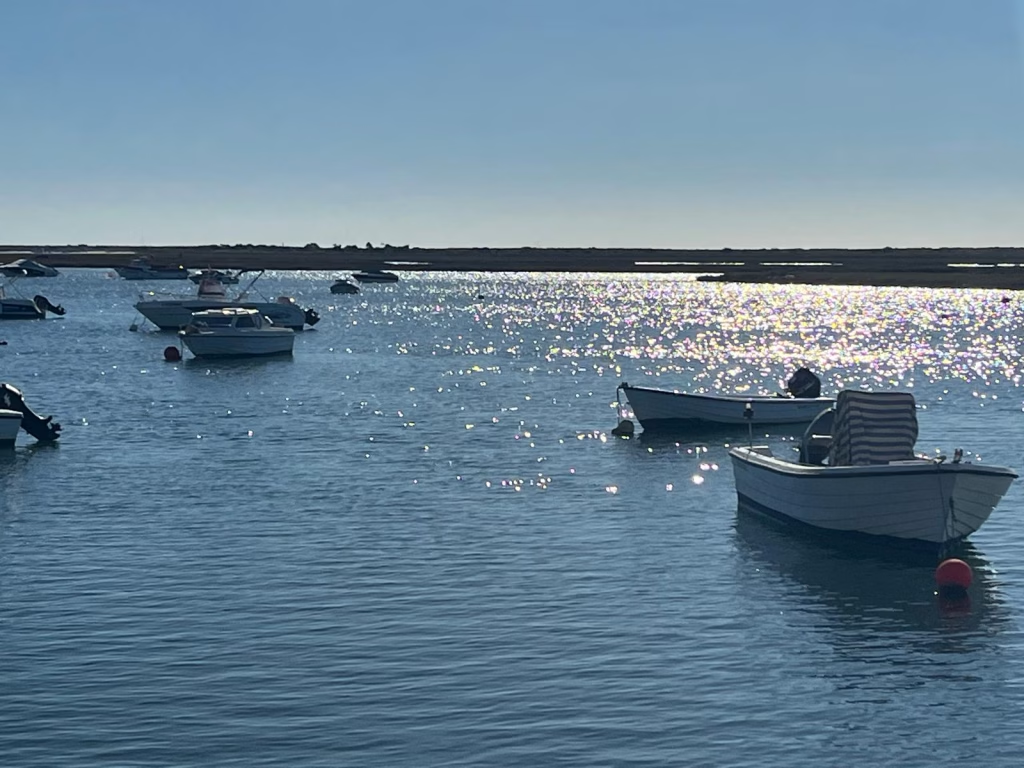Let’s be honest—Tavira’s beaches are no secret. But if you’re like me and crave a little more space, a bit more serenity, and maybe the chance to hear your own thoughts while watching the waves… then this post is for you.
Here are my top 5 secluded beaches near Tavira where you can escape the crowds, dip your toes in the Atlantic, and spend a peaceful day in nature. Just you, the sand, the sea, and maybe a few seashells for company.
1. Praia da Terra Estreita – The Barefoot Escape
Hidden between the busier Barril and Ilha de Tavira beaches, Praia da Terra Estreita is a true gem. You’ll need to hop on a seasonal water taxi from Santa Luzia (it runs spring to early autumn), but that’s half the fun.
What awaits? A blissfully quiet strip of golden sand, dunes rustling in the wind, and water so clear it feels like the Algarve 50 years ago. Bring your own snacks and plenty of sunscreen—there’s only one seasonal beach bar and zero loud music. Just the way we like it.
How to get there: Water taxi from Santa Luzia (April–October)
2. Fuseta Island Beach – Local Vibes Only
Fuseta is a working fishing town with a laid-back vibe, and its offshore island beach is perfect for escaping the mainland hustle. Ilha da Fuseta is reachable via a quick summer ferry or private water taxi , and once you’re there, it’s peace and quiet all the way.
This is where locals go to breathe. No beach clubs, no inflated prices—just white sand, turquoise shallows, and the salty scent of sea breeze.
Tip: Go mid-week and you might have entire stretches to yourself.
How to get there: Ferry or water taxi from Fuseta (summer season)
3. Ilha de Tavira (Western Stretch) – 14 Kilometers of Solitude
Most visitors get off the ferry at Praia de Tavira , grab a cocktail, and settle in. But here’s a secret: if you head west along the shore , the further you walk, the fewer people you’ll see. After a 20-minute stroll, it’s just you, the Atlantic, and maybe a lone fisherman in the distance.
This stretch of 14 km of unspoiled beach leads all the way to Praia do Barril—if you’re feeling adventurous, keep walking. Or just find your perfect spot and set up camp for the day. No roads, no cars, no worries.
How to get there: Ferry from Tavira, then walk west
4. Manta Rota Beach (Western Edge) – The Long Walk to Silence
Manta Rota itself is a family favourite, but if you walk westward along the beach , something magical happens. The crowds thin, the dunes rise, and suddenly you’re in another world. Keep going and you’ll reach the pristine shores near Cacela Velha , with its legendary views and clear waters.
You’ll pass hidden coves, tidal pools, and possibly a few other peace-seekers—but not many. This is the kind of beach walk that clears your head and fills your camera roll.
Pro tip: Time your walk with the tides—at low tide, it’s a dream.
How to get there: Park at Manta Rota and walk west
5. Praia do Lacém – The Untouched Secret
Tucked between Cabanas and Cacela Velha lies Praia do Lacém , one of the Algarve’s most peaceful and untouched beaches. It’s not accessible by road, and that’s exactly what keeps it so wonderfully quiet.
To get there, hop on a taxi boat from Cabanas —many of the same boats that cross to Cabanas Island will also take you a little further east to this off-the-map location (just ask the skipper). What you’ll find is a wide expanse of soft sand, dunes, and barely another soul in sight.
There are no facilities here—so pack water, snacks, and everything you need. What you get in return? Silence. Space. And that delicious feeling of discovering a beach that feels like it’s yours alone.
How to get there: Water taxi from Cabanas (ask for Praia do Lacém)
Final Thoughts
Tavira may be getting more popular, but serenity is still out there—if you’re willing to walk a little, wait for a boat, or veer off the tourist path. These five secluded beaches are all within easy reach of town but feel like another world entirely.
So pack a picnic, grab your hat, and go find your own little slice of Algarve paradise.
